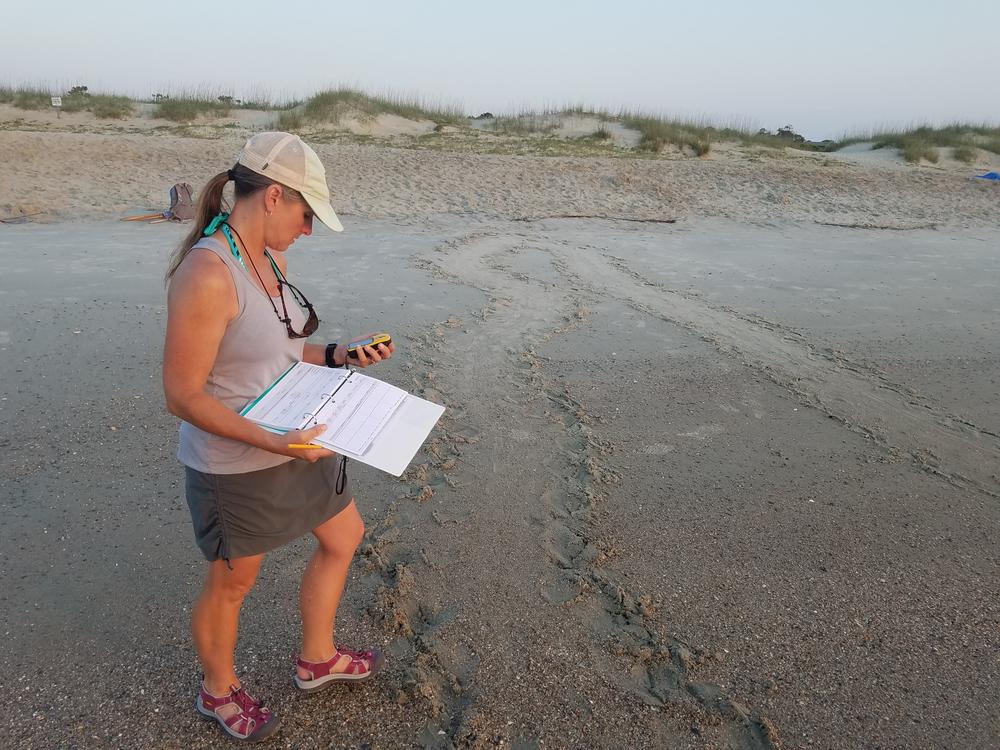Section Branding
Header Content
A Walk On The Beach To Save Georgia's Sea Turtles
Primary Content
It's sea turtle nesting season, when turtles crawl up on Georgia beaches at night to lay their eggs. Every morning, volunteers walk the beach to look for new nests and block them off so people don't disturb them.
GPB's Emily Jones tagged along for a nest survey on Tybee Island and produced this audio postcard.Tammy Smith of the Tybee Island Sea Turtle Project looks for new nests on the beach.
Tammy Smith is the coordinator of the Tybee Island Sea Turtle Project, a group of volunteers specially trained by the Georgia Department of Natural Resources to look for and properly handle turtle nests.
"It's a big job. It's a big responsibility, but I like it," Smith said. "I get to work with sea turtles. Who else can say that? We get to hold a baby when they're hatching. It's pretty rare."
RELATED: Advocates Remind Beachgoers: Make Way For Turtles
Sea turtles are endangered, and it's illegal to disturb their nests or move the eggs or baby turtles. A pair of tourists was fined after they moved six loggerhead hatchlings from a Tybee beach to a hotel room last summer.
Those turtles all survived the incident. Five were returned to the ocean and one, named Admiral, is living at the Tybee Island Marine Science Center as an educational ambassador.
Meet The Loggerheads: Sea Turtles By The Numbers
But the DNR-trained volunteers with the Sea Turtle Project handle the nests as part of their conservation efforts. Sometimes nests laid too close to the high tide line need to be moved so they don't get washed away by the ocean.
Once the nests hatch, the volunteers sometimes have to help some stragglers.
"Sometimes we have an idea when it's going to hatch; sometimes we have no idea," said Smith, explaining that the team monitors the nests for signs the babies are starting to hatch inside. "Our role then is just to make sure teh babies make it to the water."
The volunteers also record data for each turtle crawl and nest, including GPS coordinates and the type of turtle, which they can determine from looking at the tracks. They rope off each nest site and mark it with a sign to keep people from disturbing it.
Similar groups patrol the beaches on Georgia's other barrier islands to track nesting data for the entire coast.
As of Tuesday, there were 1,204 nests incubating on Georgia beaches.
MORE FROM NPR: Loggerhead Sea Turtles Lay Record-Breaking Number Of Nests In The Southeast This Year


